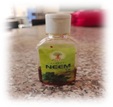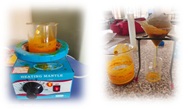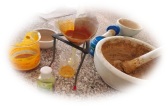
A Research on Herbal Treatment against Ectoparasites in Cattle
*Corresponding Author(s):
Ashwin Singh ChouhanJai Narain Vyas University, Jodhpur, Rajasthan, India
Tel:0000-0003-2853-4250/ 0000-0003-0221-6924,
Email:ashwinsingh26061992@gmail.com
Abstract
In herbal way we can treat cattle bite by ectoparasites parasite, nowadays world is looking towards herbal remedy and it is being brought as medicine and it is proving effective. Ectoparasites are parasites that live on or in the skin but not within the body. Fleas, ticks, lice and ear mites are common ectoparasites. Current control methods of ectoparasites, management controls include removal of dung and manure and provision of proper drainage for fly populations targeting their breeding sites, chemical control, development of resistance to it, public concern in terms of residues in food, Includes biological control. Despite many problems like environmental pollution, life form is used, manipulated and exploited. Sterile insect technology sterile insect technology is a method of biological control by which large numbers of sterile insects are released to suppress populations of others. By using herbal remedies such as (neem oil, turmeric) by applying it in the form of cream to the ectoparasites parasite bites of cattle. Diagnosis can be found from ectoparasites disease.
Keywords
Ectoparasites; Herbal; Sign & Symptoms; Transmission; Treatment
Introduction
Ectoparasites (fleas, ticks, mites and lice) are removed from a human or animal host after applying a composition that causes the temperature of the treated area to rise or fall below normal. Cattle are infected with many arthropod ectoparasites and nuisance pests, which can cause significant productivity loss and severely compromised animal welfare [1]. Ectoparasites, a taxonomic form in humans, are a diverse group of organisms that infect the skin of animals [2] it is important to emphasize clinical aspects in ectoparasite therapy and to provide optimal instruction to the patient on the use of topical therapeutics to avoid adverse effects and assure complete removal of the ectoparasite to avoid the development of drug-resistance [3]. The prevalence of ectoparasites was high and this may affect the well-being and productivity of small ruminants, the present study showed. Therefore, in order to reduce the spread of ectoparasites and the impact on productivity and health status, there is a need to plan integrated control measures with permanent veterinary services aimed at creating awareness among livestock owners about the importance and control of ectoparasites [4].The herbal composition can significantly control mixed ectoparasite infections, it has been shown by clinical studies and can help heal wounds caused by tick, flea allergic dermatitis [5].
Herbal Treatment
Cattle suffer from many diseases because they are exposed to many pathogens and parasites. Pathogens that can cause diseases in cattle include viral infections, bacteria. Treatment with medicinal plants with antibacterial activity is a beneficial option in cattle.
Methods and Materials
We first gathered the herbal plants that are effective in ectoparasite treatment. Then we collect all those plants and keep them to dry, then take each one in a beaker according to quantity. Then we mix all those ingredients and add one liter of clean water and train through a fine sieve or muslin cloth then we transfer to a bottle attached to a sprayer. Then we mix all of them in the form of cream.
Preparation
Blended all the ingredients (Table 1).
- Poured one liter of clean water.
- Filtered through a fine sieve or muslin cloth.
- Transferred to the bottle attached to the sprayer.
|
S.No |
Herbal Plants |
Quantity |
|
1 |
Neem oil |
16.6 ml |
|
2 |
Betonies |
8.3 gm |
|
3 |
Turmeric extract |
3.33 ml |
|
4 |
Sodium bicarbonate |
0.6 g |
|
5 |
Purified water q.s to |
40 ml |
Table 1: Ingredients use in herbal preparation for ectoparasites in cattle.
Procedure
Herbal cream for treatment of ectoparasites was formulated first on a small scale and then in bulk for qs to 3 times 20 ml container. For preparation of the sample, the composition of ingredients was
- Bentonite- 4 gm
- Water- 10 ml
- Oil- 16 ml.
- For preparation of large quantities the composition was--
- Bentonite- 25 gm
- Water- 120-130 ml
- Oil- 50 ml
- Turmeric extract- 10 ml
- Sodium Bicarbonate- 2 gm.
Firstly, Bentonite was grounded into fine powder form and then triturated with water to form mucilage as shown in (Figure 1)
 Figure 1: Bentonite Powder.
Figure 1: Bentonite Powder.
The mucilage was kept aside for few minutes for Bentonite to absorb some amount of water and then after 10-15 minutes, again triturated with water. After the formation of mucilage, oil was added to the gum in small proportions while continuously triturating with the gum at high speed as shown in (Figures 2 & 3)
 Figure 2: Neem Oil.
Figure 2: Neem Oil.
When all the required oil is added, the cream base is ready to be used.
 Figure 3: Herbal Ectoparasite Cream.
Figure 3: Herbal Ectoparasite Cream.
In this, hot water extract of turmeric and sod bicarbonate powder was added at the final stage with continuous trituration for homogeneous formulation as shown in (Figures 4 & 5)
 Figure 4: Extract of Turmeric and Filter of Turmeric.
Figure 4: Extract of Turmeric and Filter of Turmeric.
 Figure 5: Mixing of Herbal Cream.
Figure 5: Mixing of Herbal Cream.
Evaluate Test
Evaluation of herbal cream was following
Physical Evaluation
Formulated herbal creams was further Evaluated by using the following physical parameter
Physical parameter colour, odour, consistency, and state of the formulation.
Colour: -The colour of the cream was observed by visual examination.
Odour: -The odour of cream was found to be characteristics.
State: -The state was cream was examined visually. The cream was semisolid in state result.
- Consistency: -The formulation was examined by rubbing cream on hand manually. The cream having smooth consistency.
- pH: - pH of prepared herbal cream was measured by using digital pH meter is 8-8.5 pH.
- Washability: - The cream was applied on the hand and observed under the running water.
- Viscosity: -Viscosity of the cream was determined with the help of Brookfield viscometer at 100 rpm with the spindle no.
- Spread ability test: - The cream sample was applied between the two glass slides and was compressed between the two-glass slides to uniform thickness by placing 100 gm of weight for 5 minutes then weight was added to the weighing pan. The time in which the upper glass slide moved over the lower slide was taken as a measure of spread ability.
 Where
Where
- Spread ability- m "I/t
- W- Weight tight to upper slide
- L- Length moved on the glass slide
- T- Time take
Irritancy test
Mark an area (1sq.cm) on the left-hand dorsal surface. The cream was applied to the specified area and time was noted. Irritancy, erythema, edema, was checked if any for regular intervals up to 24 hrs. and reported.
Saponification value
Take 2 gm of the substance and reflux it with the 25 ml of 0,5 N alcoholic KOH for 30 minutes. Then add 0.1 ml of phenolphthalein as a indicator and titrate it with the 0.5 N HCL
Saponification value= (b-a) *28.05/W
- A- Volume of titrate
- B- Volume of titrate
- W- Weight of substances in gram
Acid value
Take 10 gm of the cream dissolved in accurately weighed in 50 ml mixture of the equal volume of alcohol and solvent ether. Then attached the flask with the condenser and reflux it with the slow heating until the sample gets completely dissolve then add ml of phenolphthalein and titrate it with 0.1 N NaOH until it gets faint pink color appears after shaking in 20 seconds.
Acid value=n*5.61/w
- W- Weight of the substances
- N- The number of ml in NaOH required.
Homogeneity
Homogeneity was tested via the visual appearance and test as shown in (Table 2)
|
S.No |
Parameters |
Result |
|
1 |
Colour |
Puff yellow |
|
2 |
Odour |
Neem characteristics smell |
|
3 |
pH |
8-8.5 |
|
4 |
Viscosity |
190 cp |
|
5 |
Spread ability |
5 |
|
6 |
Homogeneity |
Good |
|
7 |
Consistency |
Excellent |
Table 2: Evaluation Parameters.
Results and Discussion
In this research, we found that by giving herbal plants the form of medicine, we are able to diagnose diseases in cattle like ectoparasites. Cattle suffer from various diseases as they are surrounded by various pathogens and parasites. Pathogens that cause diseases of cattle include viral infections, bacteria. Treatment with medicinal plants with antibacterial activity in cattle is a potentially beneficial option. Medicinal plants can act as immunostimulants, providing early activation of non-specific defense mechanisms of cattle and enhancing specific immune responses. The fruits and leaves of garlic, turmeric, basil and Indian neem can be used as an alternative to chemicals to treat infestations of ectoparasites. Medicinal plants can also be used as vaccine adjutants because they are only able to stimulate non-specific immune responses, and their vaccines may be a better way of preventing diseases in cattle.
Conclusion
Cattle suffer from various diseases as they are surrounded by various pathogens and parasites. Pathogens that can cause diseases of cattle include viral infections, bacteria. Treatment with medicinal plants with antibacterial activity is a potentially beneficial option in Cattle. Medicinal plants can act as immunostimulants, providing early activation of non-specific defense mechanisms of cattle and enhancing specific immune responses against ectoparasites. Garlic, turmeric, tulsi and Indian neem fruits and leaves can be used as an alternative to chemicals to treat infestations of ectoparasites. Medicinal plants can also be used as vaccine adjutants because they are only able to stimulate non-specific immune responses, and their vaccines may be a better way of preventing diseases in cattle.
Acknowledgment
We grateful thanks to all the sincere and extremely helping friends for their support and help for the completion of work. Last but not the least, we thankful to all those who cooperated and helped me directly or indirectly to carry out this work.
Ethical Approval
Ethical approval was not required for this letter. All data used is publicly accessible.
Funding
There were no external sources of funding for this research.
Financial Support and Sponsorship
Nil.
Declaration of Competing Interest
All authors are, do not report any conflicts of interest in the writing of this letter.
References
- (2014) Ectoparasites and insect pests.
- Pollack RJ (2008) Ectoparasites and Arthropod Vectors: Ectoparasite Infestations, International Encyclopedia of Public Health. 282-294.
- Roos TC, Alam M, Roos S, Merk HF, Bickers DR (2001) Pharmacotherapy of ectoparasitic infections. Drugs 61: 1067-1088.
- Seyoum Z, Tadesse T, Addisu A (2015) Ectoparasites Prevalence in Small Ruminants in and around Sekela, Amhara Regional State Northwest Ethiopia. Journal of Veterinary Medicine.
- Periyaveeturaman C, Selvaraju D, Kinhekar AS, Singh PK, Ravikumar R (2015) Efficacy of herbal composition against ectoparasite infestation in dogs. Advances in Applied Science Research 6: 242-245.
Citation: Chouhan AS, Choudhary K, Prakash (2022) A Research on Herbal Treatment against Ectoparasites in Cattle. J Anim Res Vet Sci 6: 0.39
Copyright: © 2022 Ashwin Singh Chouhan, et al. This is an open-access article distributed under the terms of the Creative Commons Attribution License, which permits unrestricted use, distribution, and reproduction in any medium, provided the original author and source are credited.

